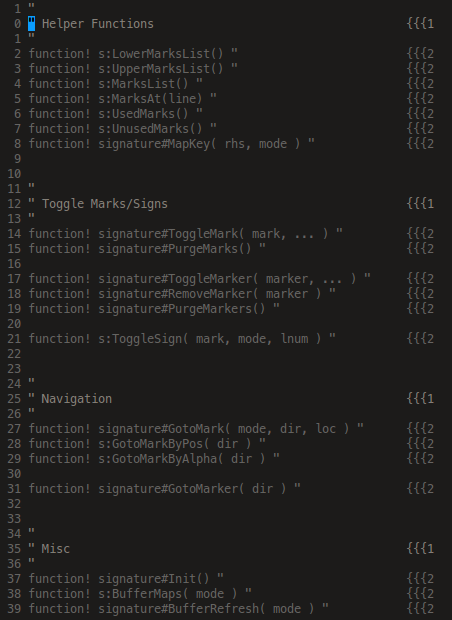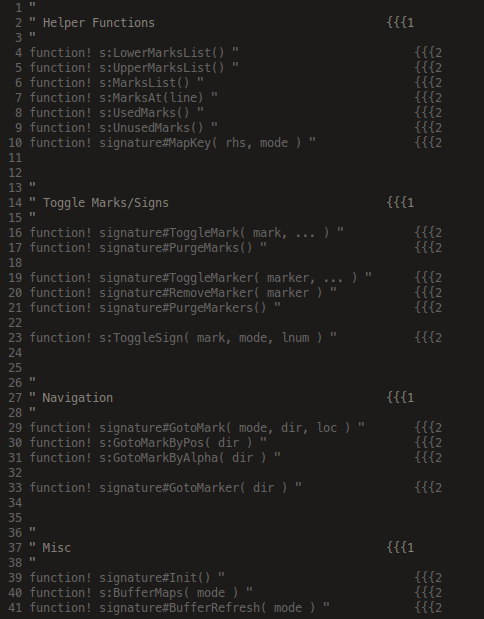Awesome
For some time now, I've been wanting to clean up the code and finally got around to it.
However, I also ended up removing some features that I felt were not useful in a bid to keep things simple.
I also have changed the default maps in order to get rid of ugly leader maps and now the commands accept a count instead of accepting it as an input.
If you prefer to use the earlier version, you can download it from here
#vim-origami
Plugin to satisfy all your folding needs
- Justify all the open-fold markers
- Create new open/close foldmarkers conveniently
If you like the plugin, show some love by rating it at vim.org and spreading the word.
##Screenshots
Before: foldmarkers strewn all over the place

After: all the foldmarkers aligned neatly in a column

Staggered alignment visually showing the heirarchy

Force the alignment to happen on a particular column

##Installation I highly recommend using a plugin manager to do the dirty work for you. If for some reason, you do not want to use any of them then unzip it to your ~/.vim directory
##Usage So, once that's done, out of the box, the followings mappings are defined by default:
`<count>Za` Align all folds of level 'count'
`ZA` Align all folds
`<count>ZF` Insert a start foldmarker of level 'count' at the end of line and comment it
`<count>Zf` Insert a start foldmarker of level 'count' at the end of line but don't comment it
`<count>ZC` Insert an end foldmarker of level 'count' at the end of line and comment it
`<count>Zc` Insert an end foldmarker of level 'count' at the end of line but don't comment it
`ZD` Delete the foldmarker from the line
If no count is given, then the actions are performed on unnumbered folds